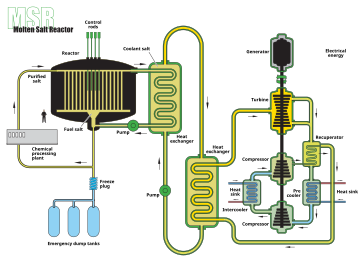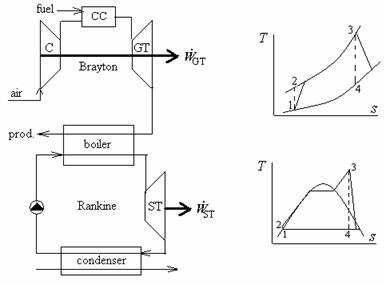Energy Multiplier Module (EM²)
General Atomics Energy Multiplier Module (EM²) reactor
Nuclear Energy Institute - Small Reactors
The U.S. Department of Energy has committed about $450 million to two Small Modular Nuclear Reactor (SMR) designs over the last year-and-half -- one by Oregon's NuScale and the other by North Carolina's Babcock and Wilcox.
The licensing program is focused on light water small modular reactors, which are intended to be much smaller — generally, a capacity ranging between 50 and 300 megawatts — than the large reactors operating around the world.
Once again the Government may have picked the wrong winner.
Company stumbles have Energy Dept., Capitol Hill worried about $450 million nuclear program | Taxpayers for Common Sense
"Small modular reactors represent a new generation of safe, reliable, low-carbon nuclear energy technology and provide a strong opportunity for America to lead this emerging global industry,” Energy Secretary Ernest Moniz said when the department announced the NuScale deal in December.
But those outside the administration and the nuclear sector have one question: What industry?
There are few players in the light water small modular reactor space. Westinghouse, which had applied for the cooperative agreement with DOE, is winding down its operations. That leaves Holtec International as the only U.S.-based company without a DOE contract working on light water small modular reactors. Few are looking to invest in nuclear technology when utilities and industrial consumers can build natural gas-fired generation for a song.
On top of that, the cost per kilowatt-hour for small modular reactors is prohibitive — Peter Bradford, a former NRC commissioner, said costs would need to fall between 20 and 25 percent to be competitive, but that companies haven't been able to achieve that. Boosters say cost issues could be remedied by placing multiple reactors near each other, but NRC regulations prohibit monitoring more than two from the same control room.
"The fundamental problem here is that there's no foreseeable market," Bradford told the Examiner
Alternative nuclear energy race heats up as Canadian company enters - SmartPlanet
 |
| MSR Schematic |
There are molten salt reactor companies including Terrestrial Energy, Thorium Tech Solution and Transatomic Power.
.svg/220px-Pebble_bed_reactor_scheme_(English).svg.png) |
| Pebble Bed Reactor Schematic |
Pebble bed reactors companies are Steenkampskraal Thorium, X-Energy and Northern Nuclear.
SmartPlanet provides a detailed update on the General Atomics (GA) Energy Multiplier Module (EM²) reactor.
GA is innovating new materials, getting the efficiency way up, simplifying the design and getting the cost into the competitive range.
GA is developing a Brayton cycle to convert heat to electricity at 53% versus 28-34% for regular steam turbines. In a four-module plant (1.06GW), one point of efficiency is worth a billion dollars in revenue over the life of the plant. 53% efficiency means $19 billion dollars more than a 34% efficient plant.
GA's design is a 265-megawatt (electric) sized reactor, with a fuel cycle lifetime of 30-plus years.
No refueling and very small waste.
8.9 – The Brayton cycle and MSR reactors | daryanenergyblog
provides discussion of merits of Brayton Cycle.
 |
| Brayton v. Rankine Cycle |

No comments:
Post a Comment